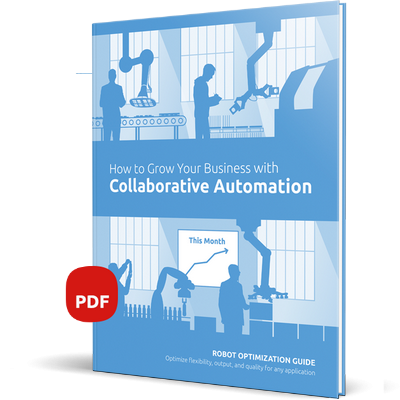#ThoughtsOnRobots: Juho Liljamo


Human-robot collaboration is at the heart of successful automation. In this interview, Juho Liljamo, Technical Sales Engineer at Oy Machine Tool Co. in Finland, shares his thoughts on how to get your production team on board with automation.
"Without good production operators, you can't have great automation!"
Juho Liljamo makes it very clear: The point of collaborative applications is that humans and robots work together. The operators are the key factors when you are scaling up your automation. If they are not on board with the project from the start, collaborative automation will be an uphill battle. Juho Liljamo believes that early employee involvement is the key to success.
"Operators are starting to realize that robots can do all the unergonomic, arduous tasks and improve the working environment," he says.
Here is his advice on getting that crucial buy-in from your production team:
Choose the simplest, most repetitive task
Before you decide on the first collaborative automation project, speak with everyone in production. They know the production tasks and can point you to the simplest, most repetitive and most unergonomic ones. Those are the tasks you want to start automating. Remember, no task is too simple when you are running your first collaborative automation project.
Your production team knows best
Ask your production team what senses you need as a human to complete the task you want to automate: vision, touch, both hands or one hand? And how much do you need to communicate with other production machines?
Start small and scale from there
The first project needs to be success, so keep it small. The scalability of collaborative applications makes it easy to grow your automation as you and your team gain more experience.
Once your production team is able to deploy collaborative applications by themselves, they will start looking for other potential applications which can be automated. Now, your workers are constantly developing and optimizing the production process.
In the first project, don't worry too much about return on investment. See it as a test run, learn from it, and trust that you will earn back the money when you are deploying more and more collaborative applications!
Build in-house automation expertise with collaborative applications
Juho Liljamo puts the increasing worldwide demand for collaborative applications down to their flexibility, easy implementation and quick return on investment. With collaborative applications, he explains, small and medium sized enterprises can build their own experience and knowledge on how to deploy and use automation. With in-house automation expertise, they are not as dependent on external consultants.
"Covid-19 has proven that you cannot rely entirely on outsourced engineering; you have to gain your own in-house expertise," says Juho Liljamo.
He recommends that production teams learn to implement their own collaborative applications.
"Our target in every project is that the customer can deploy the next robot by themselves. That way, they get the most out of their robots and they have greater flexibility when production changes," he says.
-----------------------------------------------------------------------
#ThoughtsOnRobots

|
İşbirliğine Dayalı Uygulamalarla İşletmenizi Nasıl Büyütürsünüz
Daha akıllı, daha uyarlanabilir araçların ortaya çıkmasıyla robotlar artık daha fazla hız, güç, güvenlik ve hassasiyetle çalışarak YG'ni en üst düzeye çıkarırken çok çeşitli görevleri yerine getirebilir. Ücretsiz e-Kitabımızı indirerek daha düşük maliyetle daha hızlı üretimi nasıl sağlayabileceğiniz hakkında daha fazla bilgi edinin.
ÜCRETSİZ E-KİTABI ALIN
|

|

